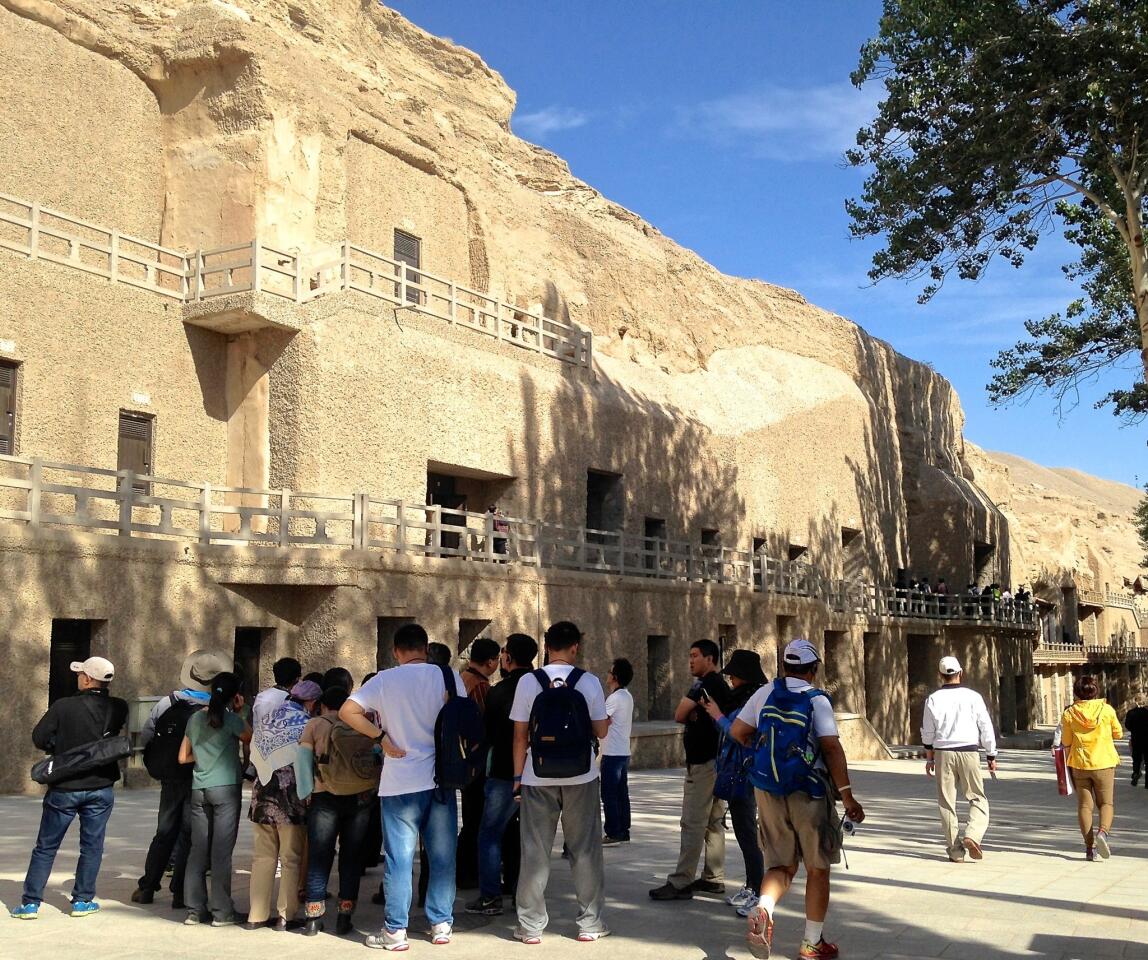A look at the ancient Buddhist wall paintings and a new visitor center at the Mogao Grottoes in Dunhuang, China.
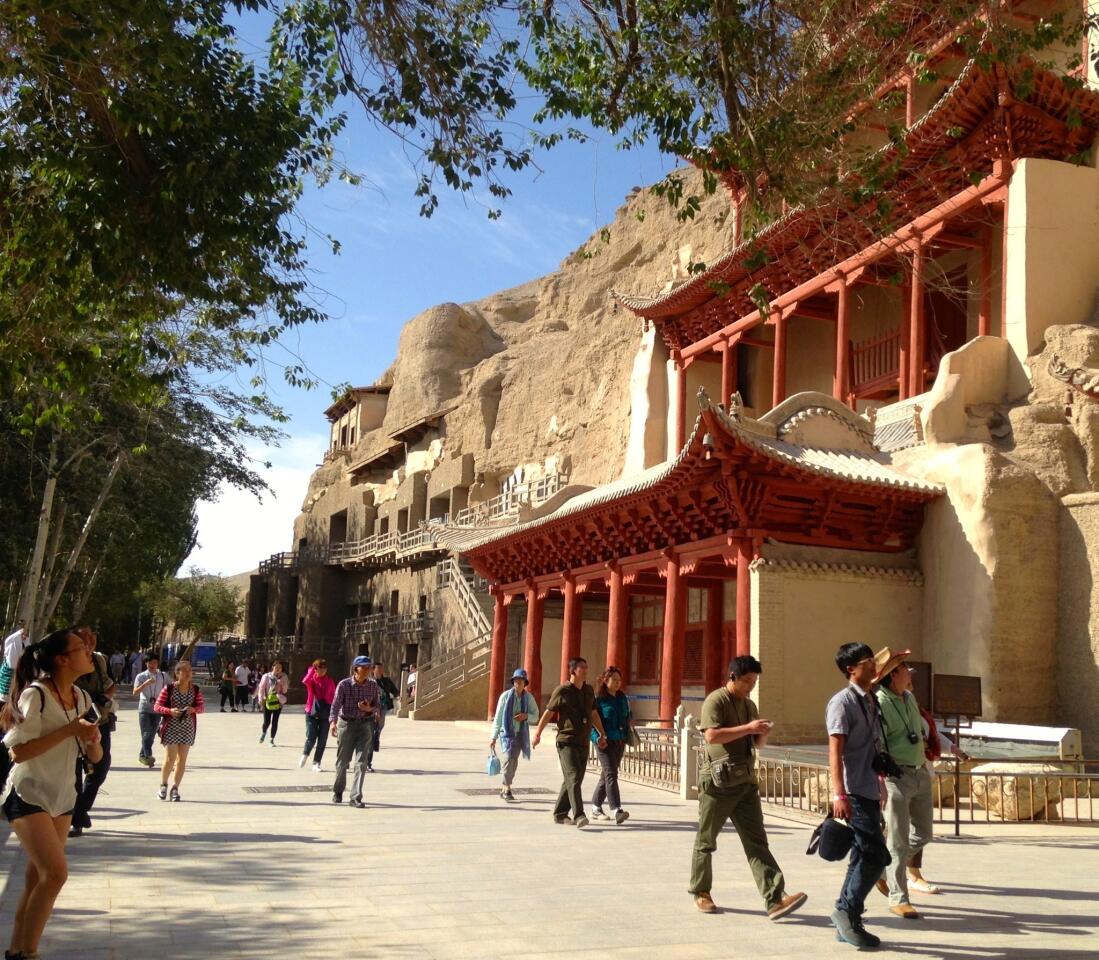
Visitors stroll around the site of the Mogao Grottoes in Dunhuang, China. Doors and walkways were added in the 1960s to help preserve the artworks. (Julie Makinen / Los Angeles Times)
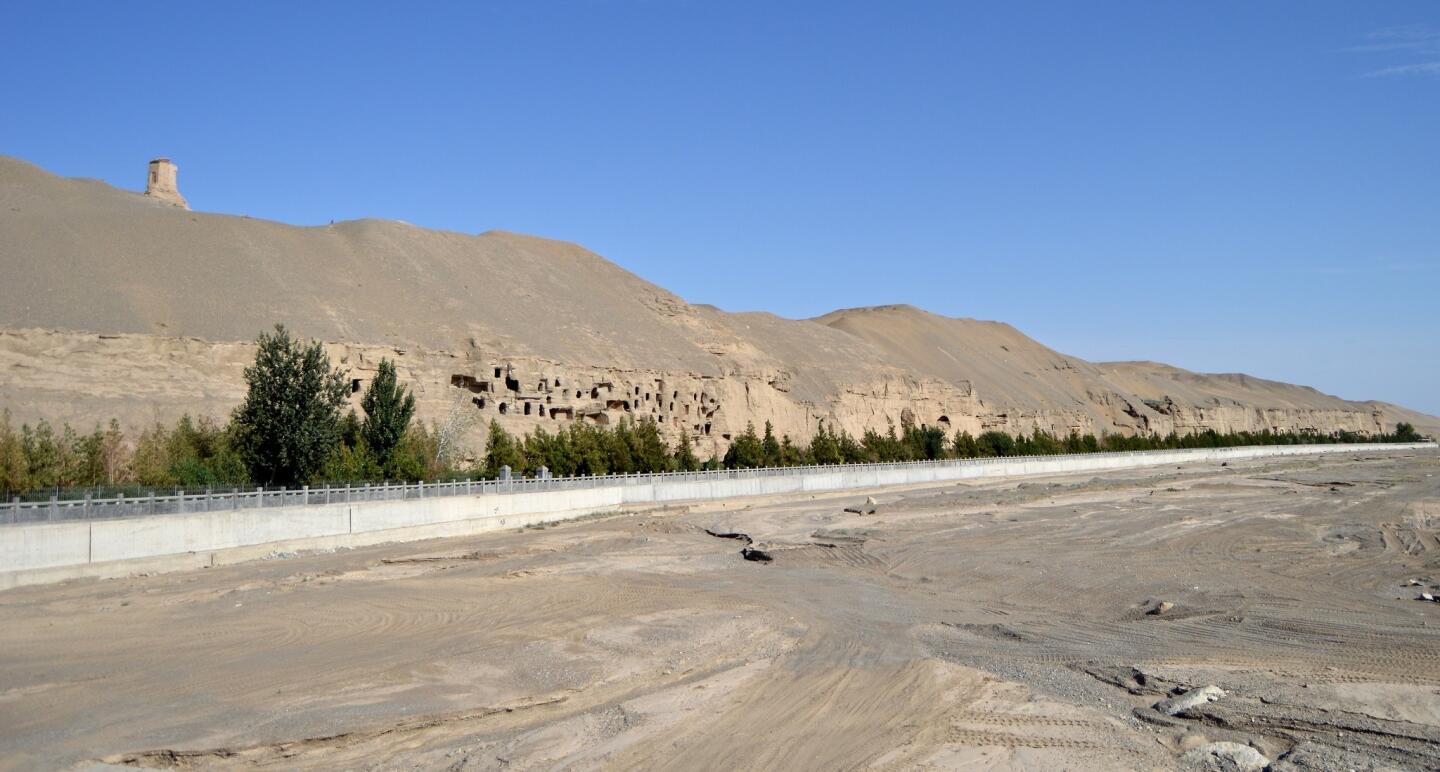
The Mogao Grottoes were carved by hand into the sandstone cliffs near Dunhuang, China, between the 4th and the 14th centuries. (Julie Makinen / Los Angeles Times)
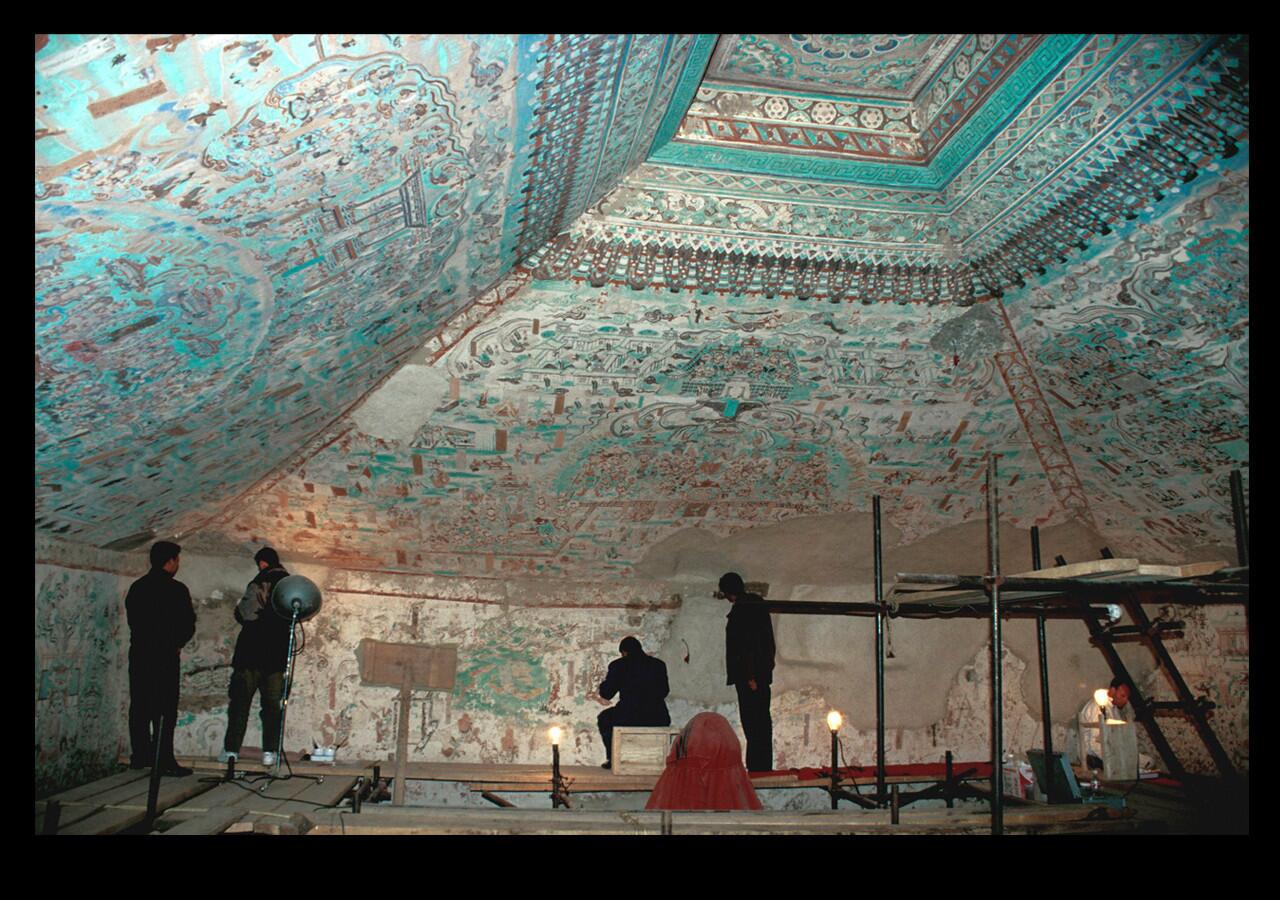
The Getty Conservation Institute’s 25-year partnership with Dunhuang Academy is the institution’s longest-running project. (Neville Agnew / The J. Paul Getty Trust)
Advertisement
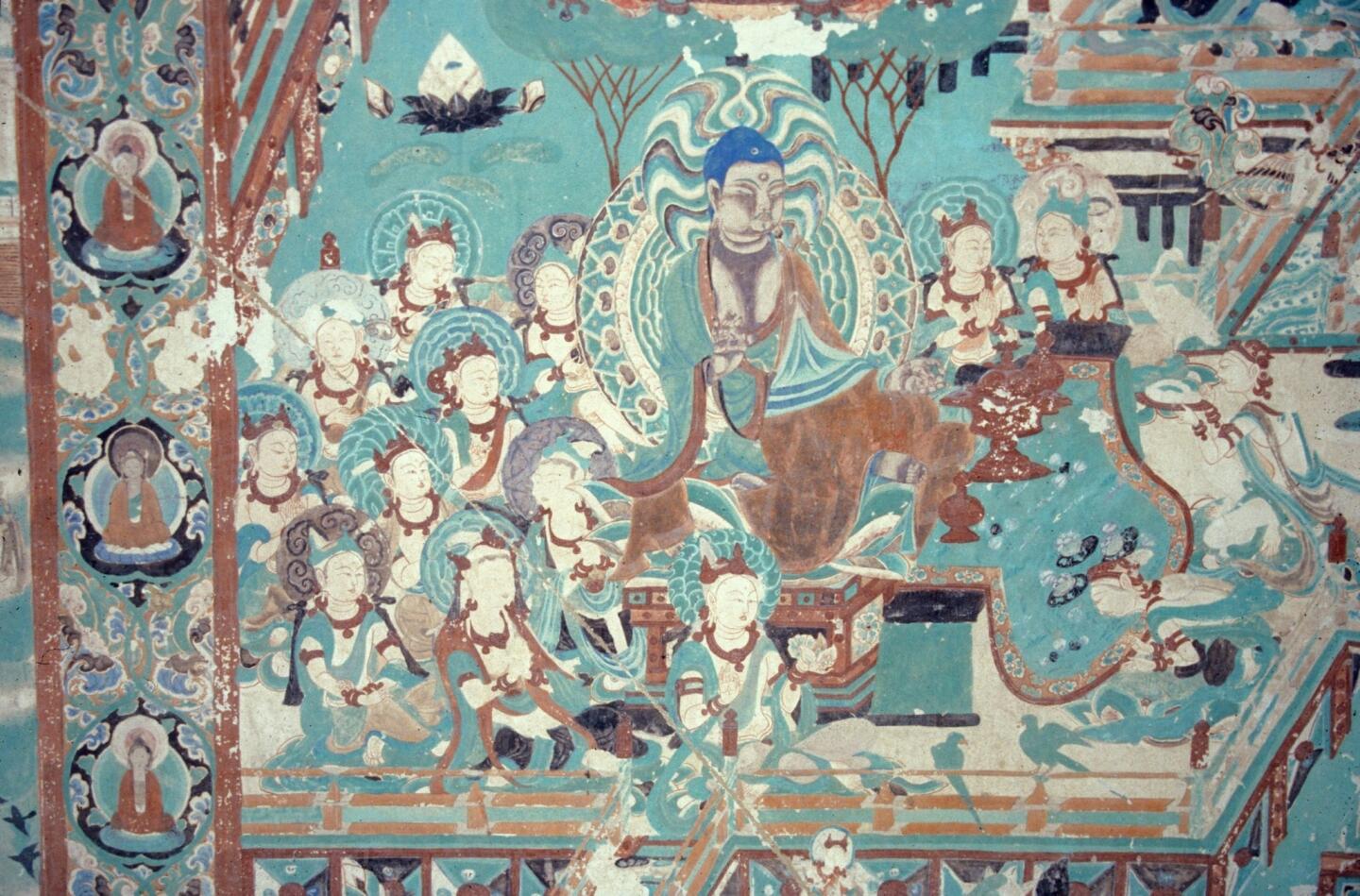
A detail of wall paintings at the Mogao Grottoes in Dunhuang, China. (Neville Agnew / The J. Paul Getty Trust)
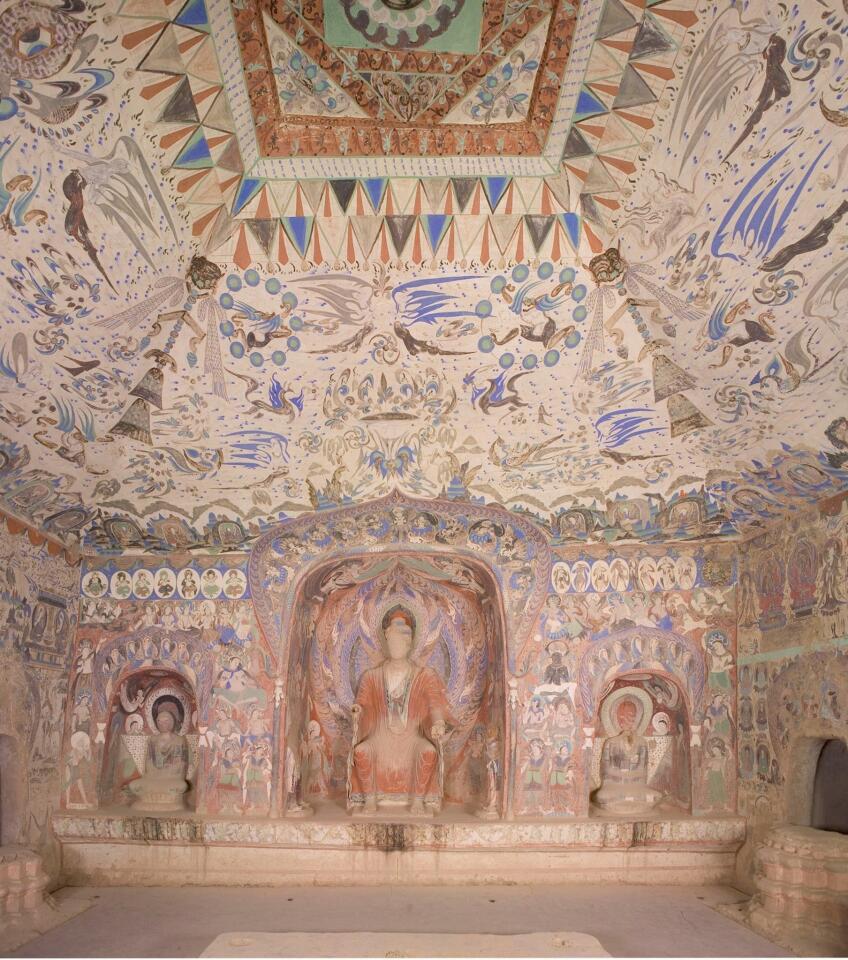
Inside a cave at the Mogao Grottoes in Dunhuang, China. (Dunhuang Academy / The J. Paul Getty Trust)
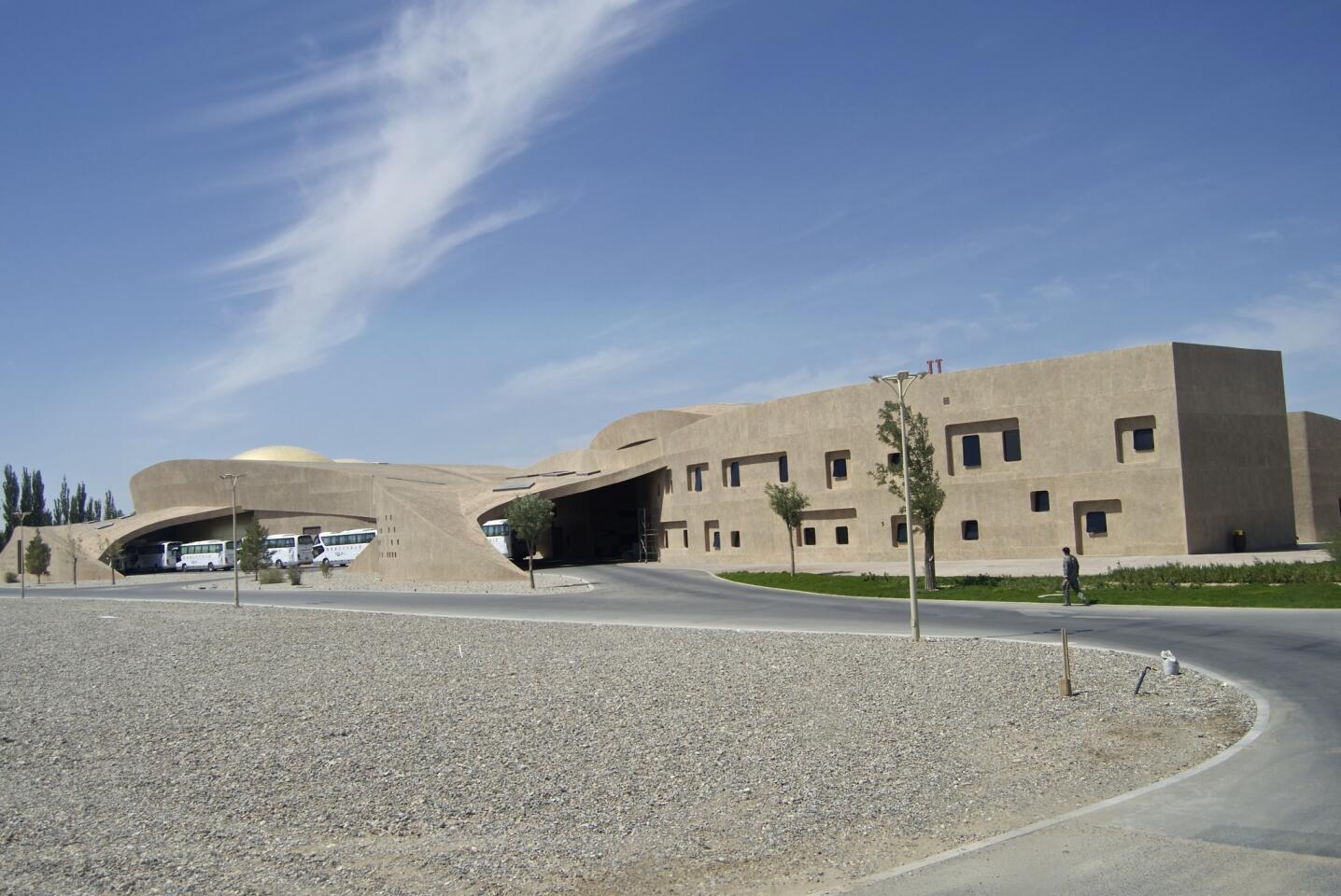
A new $50-million visitor center at the Mogao Grottoes in China’s Gobi Desert presents two films to tourists. The center aims to give visitors a more immersive experience, while reducing the amount of time they spend in the actual caves. (Julie Makinen / Los Angeles Times)
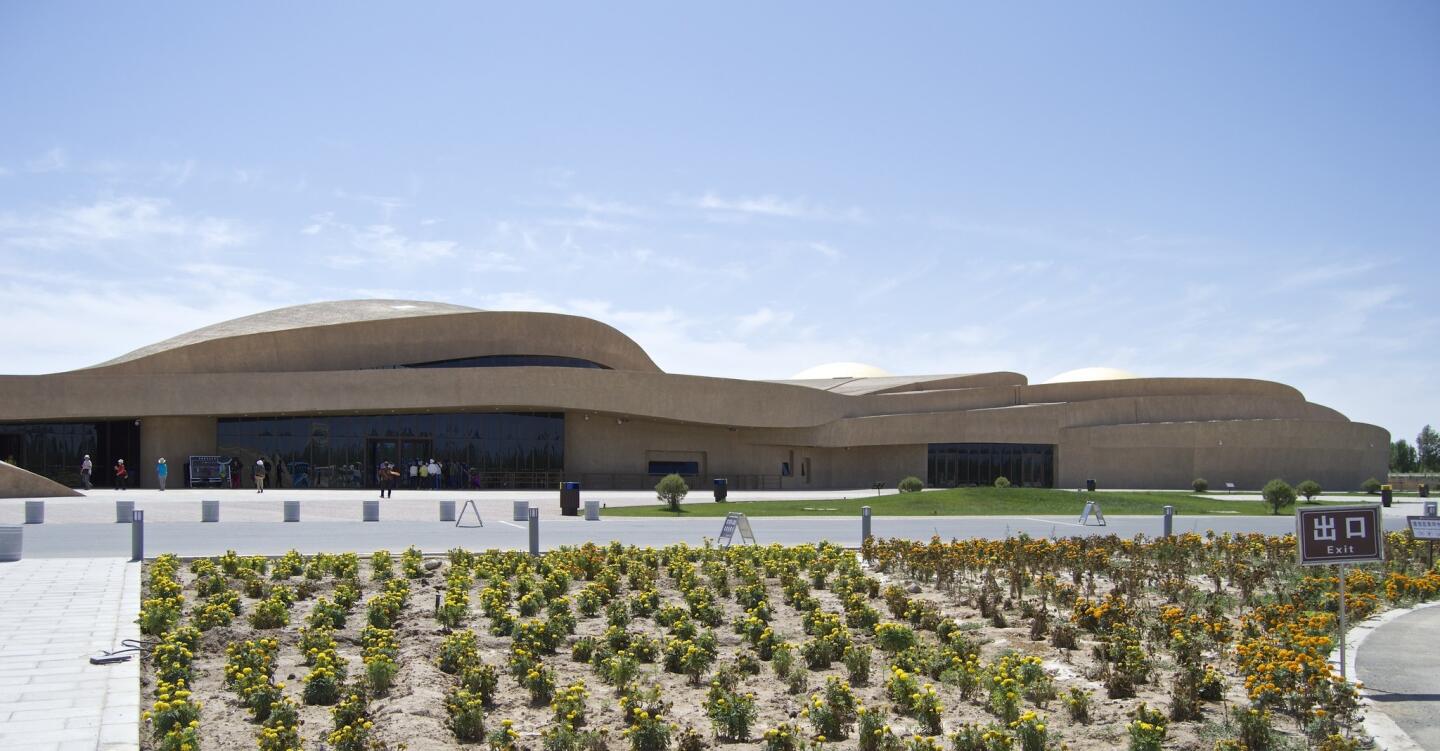
The new Mogao Grottoes visitor center’s architecture mimics the surrounding landscape. (Julie Makinen / Los Angeles Times)
Advertisement
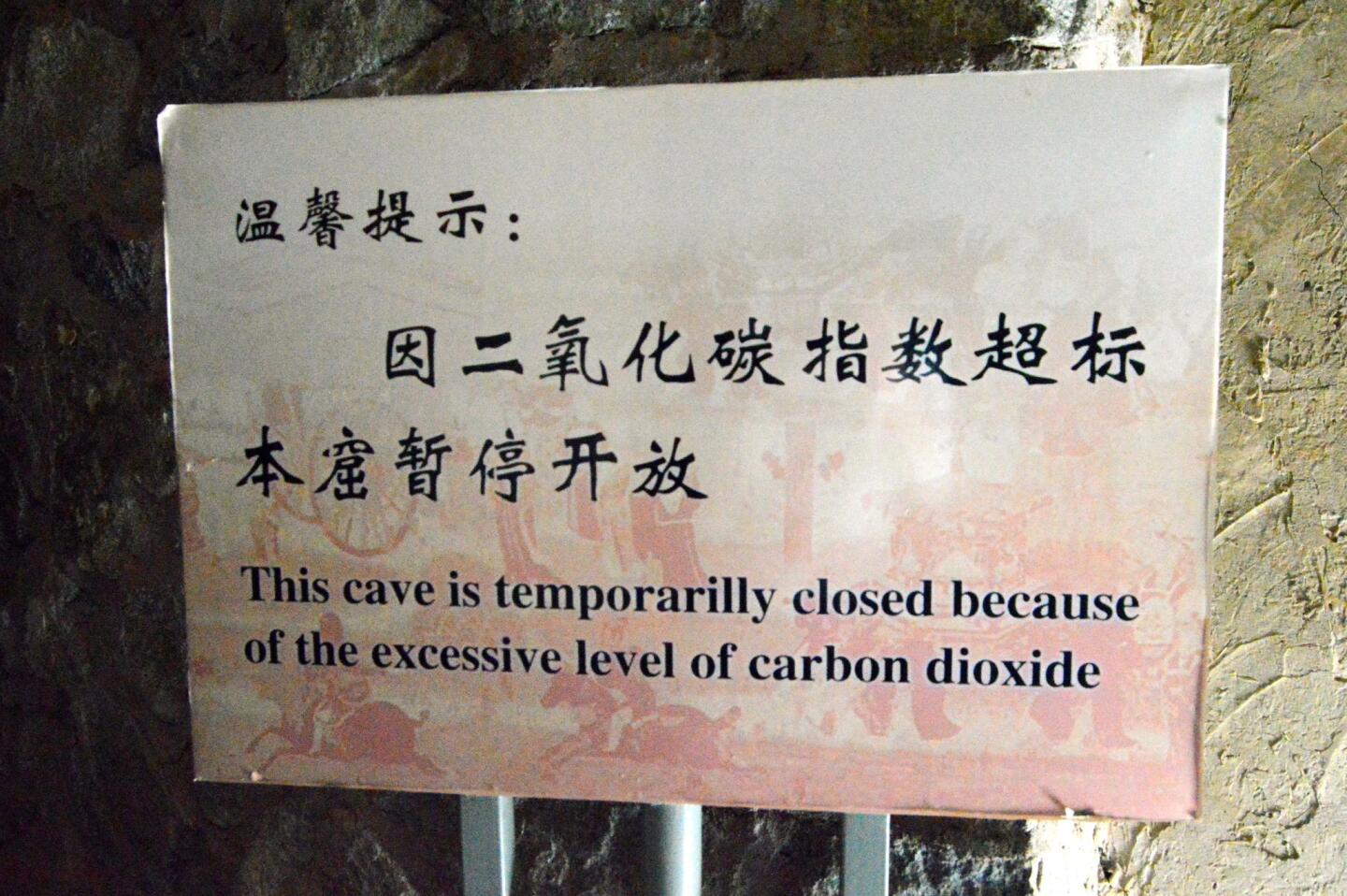
A sign informs visitors that they may not enter a cave because of excessive levels of carbon dioxide. On a typical visit, tourists can enter eight to 10 caves of the nearly 500 in the complex. (Julie Makinen / Los Angeles Times)
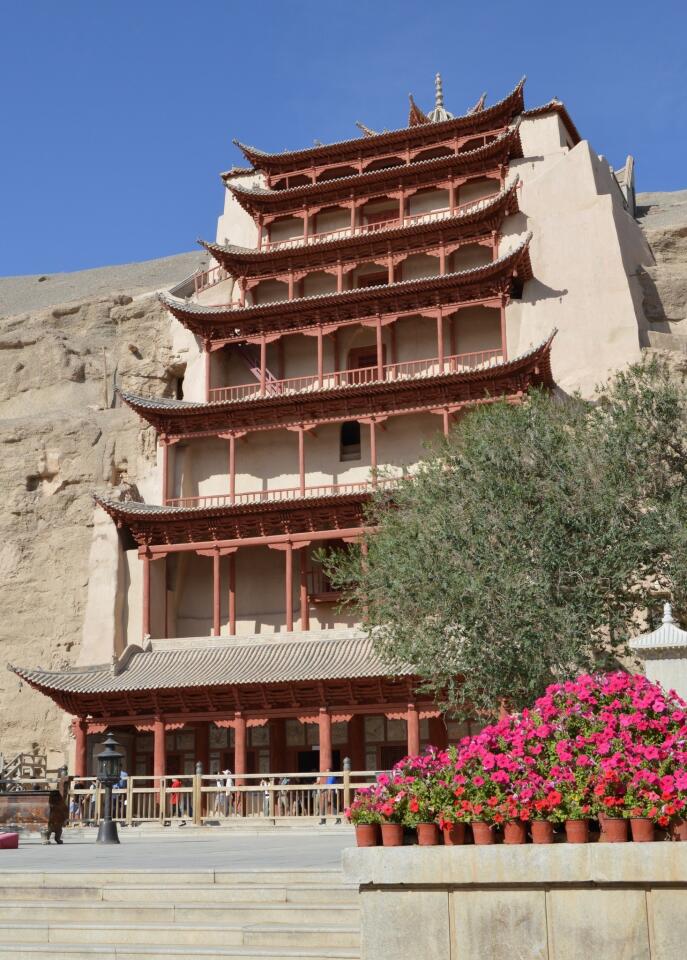
Once the caves were carved, some of them had elaborate facades added on the cliff face. This large cave, No. 96, houses a giant Buddha sculpture 35.5 meters (about 116 feet) high, the third largest in China. It was built 1,300 years ago during the Tang Dynasty. (Julie Makinen / Los Angeles Times)
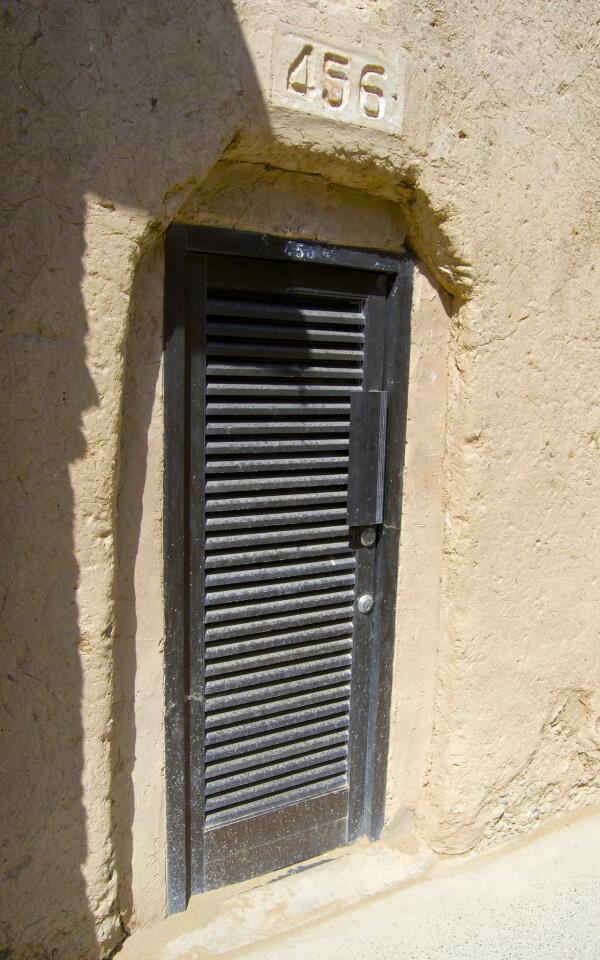
Some of the caves, like No. 96, are massive while others like No. 456 are quite small. Each cave at the Mogao Grottoes is numbered. (Julie Makinen / Los Angeles Times)
